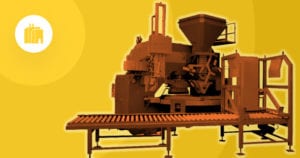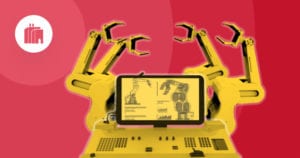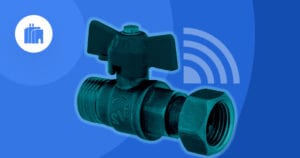
Manufacturing is currently experiencing the fourth industrial revolution of its kind with applications utilizing technologies such as IoT, AI and robotics that are evolving the industry. Research suggests that, by 2020, global manufacturers will invest $70 billion in IoT solutions and many manufacturers are implementing IoT devices to leverage predictive maintenance and sophisticated data analytics to improve productivity, availability and add value to their business offerings.
With the number of smart devices set to reach 31 billion by 2020 and increase to 75 billion by 2025, it’s essential that businesses understand the way these devices are transforming traditional ways of working into dynamic, interconnected systems. Through the utilization of IoT, challenges in manufacturing and throughout the supply chain can be minimized by IoT sensors.
Increased Safety
Equipment malfunctions are a key factor contributing to safety incidents, with research finding that around 151 laborers face accidents in the workplace every 15 seconds. Ultimately, one of the main ways IoT technology can assist with safety in manufacturing is by increasing the volume of data and reducing the time it takes to get it. Rather than entering data manually, live data can be transmitted directly to the control rooms or appropriate areas. By implementing AI, data analytics can inform employees immediately of issues either current or pending, resulting in more streamlined processes. By analyzing data over an extended period of time, long term exposure can be calculated and potentially hazardous conditions can be detected up in advance to ensure workers are wearing safeguards when necessary.
Improved Inventory Maintenance
IoT can positively affect the maintenance of inventory by effortlessly monitoring the supply chain, offering companies a clear view of their moving parts. IoT allows supplies to be counted accurately as well as the ability to track products efficiently, which prevents any slowdown and shortage of stocks. Through IoT applications like sensors, alerts can be sent when products are running low on stock. The power of real-time data means that the opportunities are endless when it comes to optimizing inventory.
Reduced Costs
Companies are realizing the potential to save money and profit through the adoption of IoT. Although the cost of implementing the technology is vast, in the long-term, costs can be saved as a result. IoT is reducing the cost by saving more than 12% on repairs and decreasing breakdowns by nearly 70%. Not only can it reduce costs in terms of equipment, but also saves on labor costs. IoT releases staff resource from long hours of manual checks, by providing full control 24/7. IoT gives organizations the opportunity to plan better and as a result, serve faster and more effectively to customers. Additionally, costs can be saved due to the ability to implement measures and predictive maintenance.
The Future
IoT is continuously improving communication and optimizing manufacturing processes, with more applications and solutions being developed constantly. Microsoft recently announced that it’s joining forces with the BMW Group to transform digital production efficiency across the industry with an IoT open manufacturing platform. With this, it’s clear that many are starting to take advantage of this powerful technology and, as a result, are increasing productivity and efficiency, as well as gaining a deeper insight into their customers’ behavior patterns and needs. However, there are still some obstacles that need to be overcome, such as the lack of knowledge some companies still have. Workers undergoing IoT training and having experts in this area available internally will benefit businesses and equip them with the right tools to build a better future.
Written by Tim Purcell, R&D Director at Datel.





 Related Podcast Episode
Related Podcast Episode




 Related Applications
Related Applications



 Latest IoT News
Latest IoT News








